Understanding how your facial hair grows is the most important part of shaving. Disregarding this can result in irritation and razor bumps.
In this guide, we will help you in identifying the shaving grain of your facial hair so you can always achieve a close and comfortable shave every time.
The advice covered today isn’t exclusive to just facial hair and can be applied to any hair that you intend to shave with a razor blade.
Let’s begin:
Mapping the Facial Hair
Before we start demonstrating how to determine the shaving grain, here are a couple of notes:
- The direction of facial hair growth varies greatly from one man to the next. So don’t copy our results 1:1.
- It’s easiest to map the grain of facial hair after a few day’s worth of growth.
How to Determine the Shaving Grain
When mapping the facial hair, it’s best to take about six pictures with your phone. Left, front, and right – above and below the jawline.
Once the pictures have been taken, you can either use the printable template provided here or use a photo editor and place directional arrows on the picture. Trying to memorize all the directions can be difficult, especially once shave cream has been applied.
When mapping the grain, the goal is to find out the general direction of how your facial hair grows. If you were to run your finger with the grain, it should feel soft. Going against the grain will feel spiky or rough.
Once you have taken the pictures and drew the arrows of growth, you should look something like this:
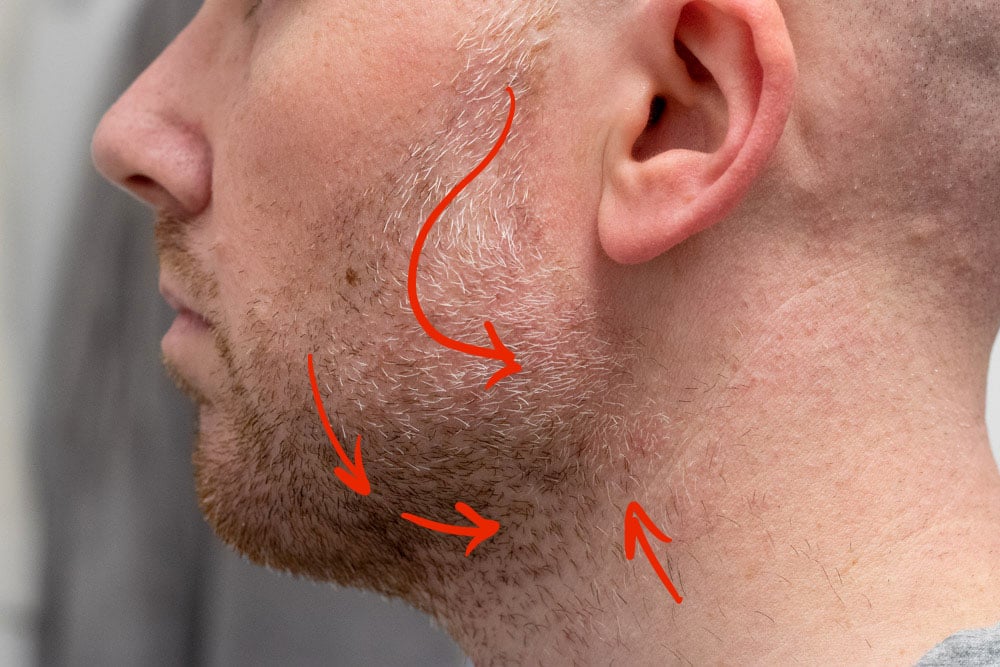
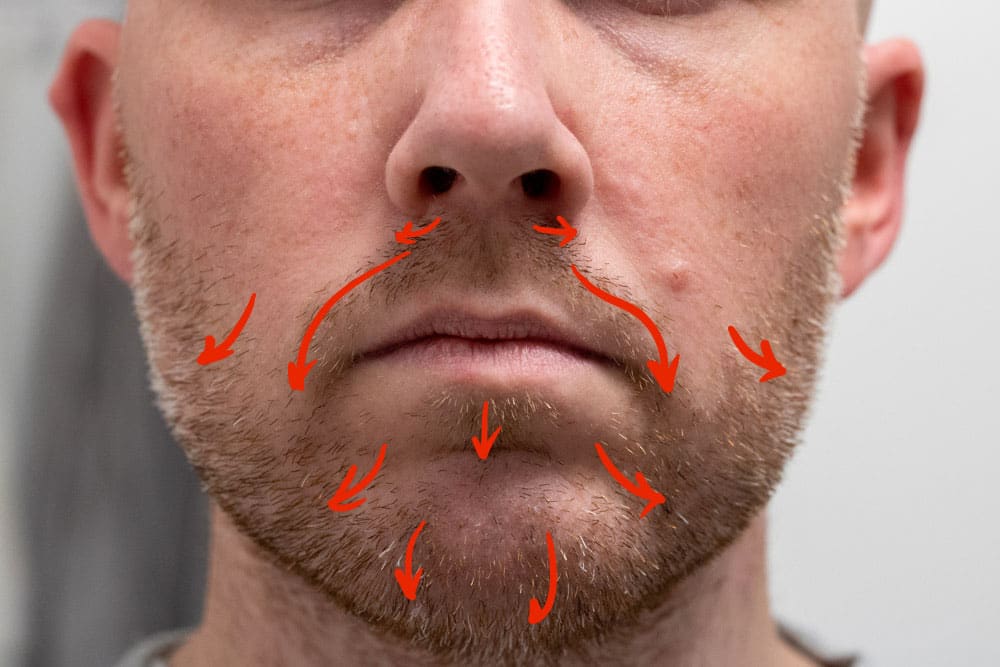
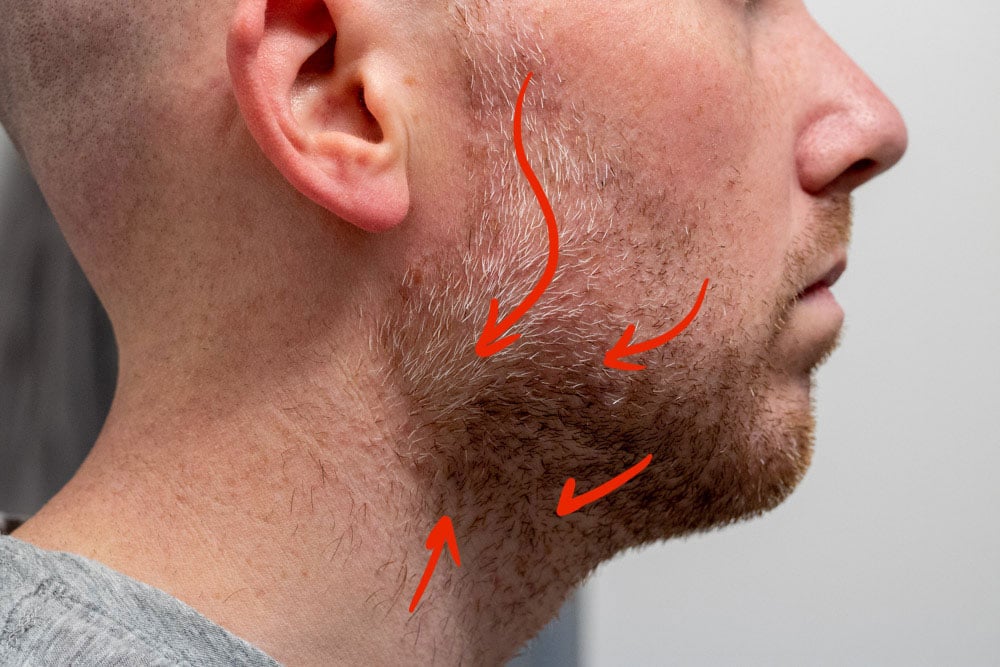
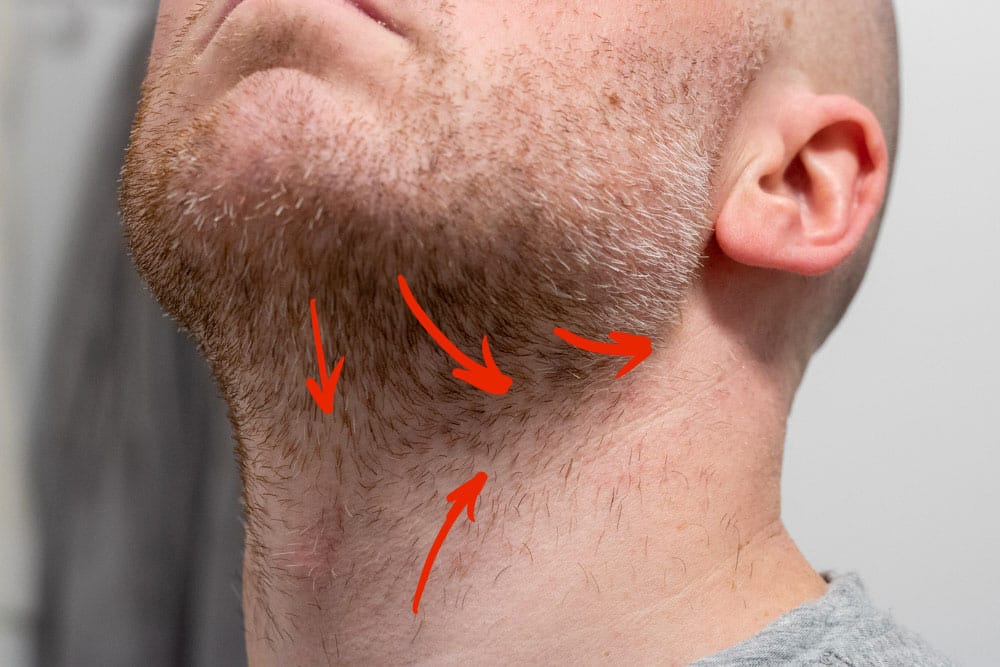
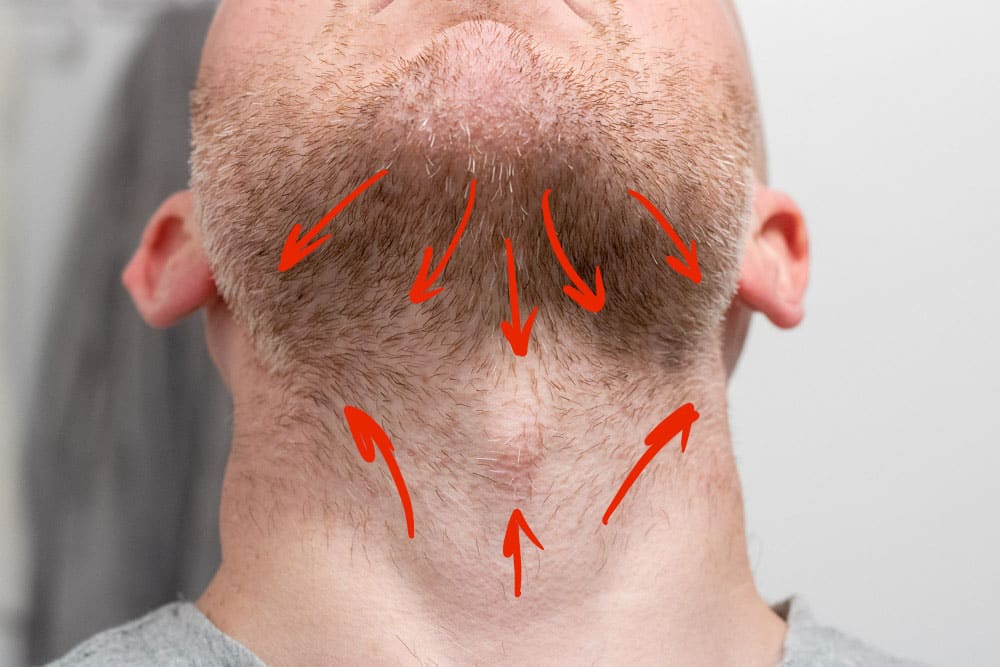
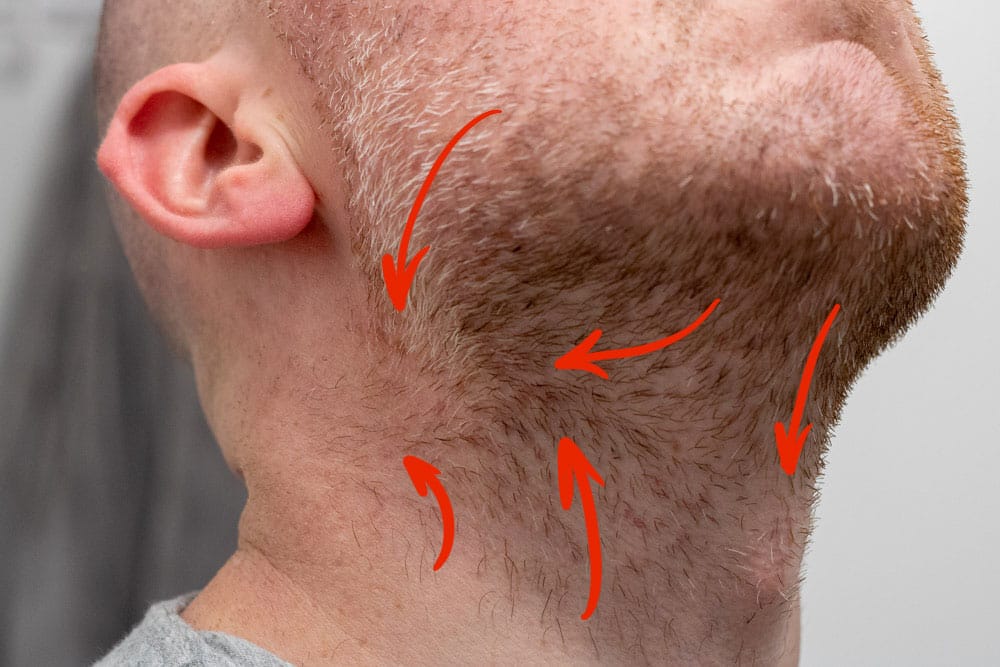
As you can see, facial hair grows in many different directions. Trying to memorize this would be pretty darn tough.
By documenting, though, you have a nice blueprint to follow for your next shave.
Now there are a few confusing parts, such as S-curves in facial hair growth (seen above on the cheek area). For these areas, it might be okay to go in a straight direction through the S curve from top to bottom rather than following it perfectly. Experiment here–the rules aren’t rigid. Do what makes for comfortable results.
Shaving the Neck
Let’s look at the facial hair above and below the Adam’s apple.
As you can see in the diagram below, above the Adam’s apple the facial hair grows downwards or to the side. However, below the Adam’s apple, the facial hair grows upwards:
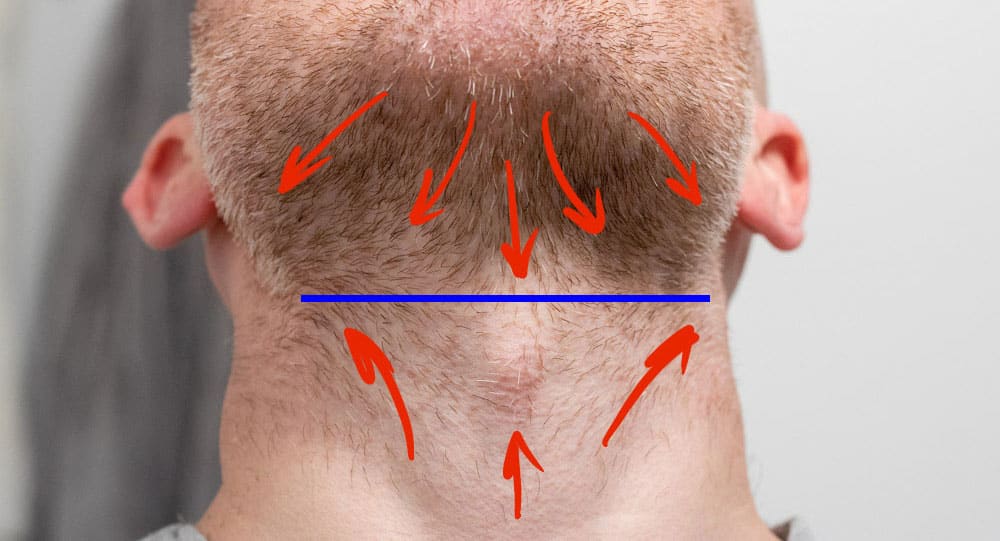
Therefore when shaving, I like to use the Adam’s apple as a reference (blue line) to help determine which way the razor needs to pass. Everything above the blue line, the razor passes downwards and to the side, whereas everything below the blue line, the razor passes upwards.
Again, do yourself a favor and print out this shaving diagram that I made for you so you can identify the direction that your facial hair grows in. Once figured out, you can tape it up to your bathroom mirror and use it as a reference when shaving.
When to Go With, Across, and Against the Grain
When researching wet shaving, you will see a lot of folks recommending that you should go with the grain, across the grain, against the grain, or even a combination of all three directions!
Here is some clarification on what they mean and if you should make such passes:
Shaving With the Grain
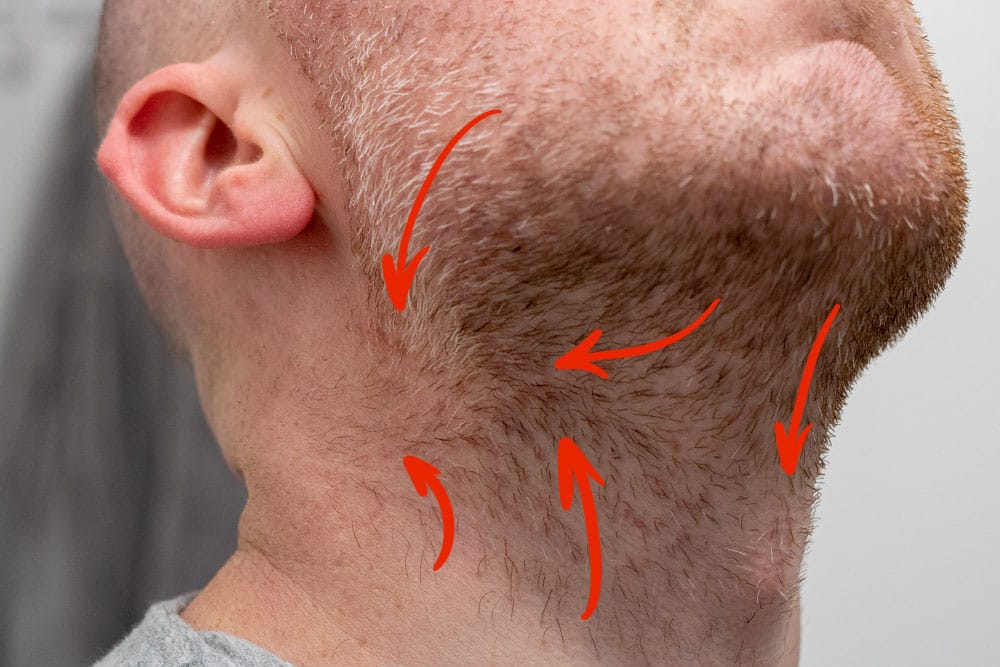
As the name implies, shaving with the grain means that you are making passes in the same direction that the facial hair grows in – so follow the razor with the arrows in the example above.
Shaving Across the Grain
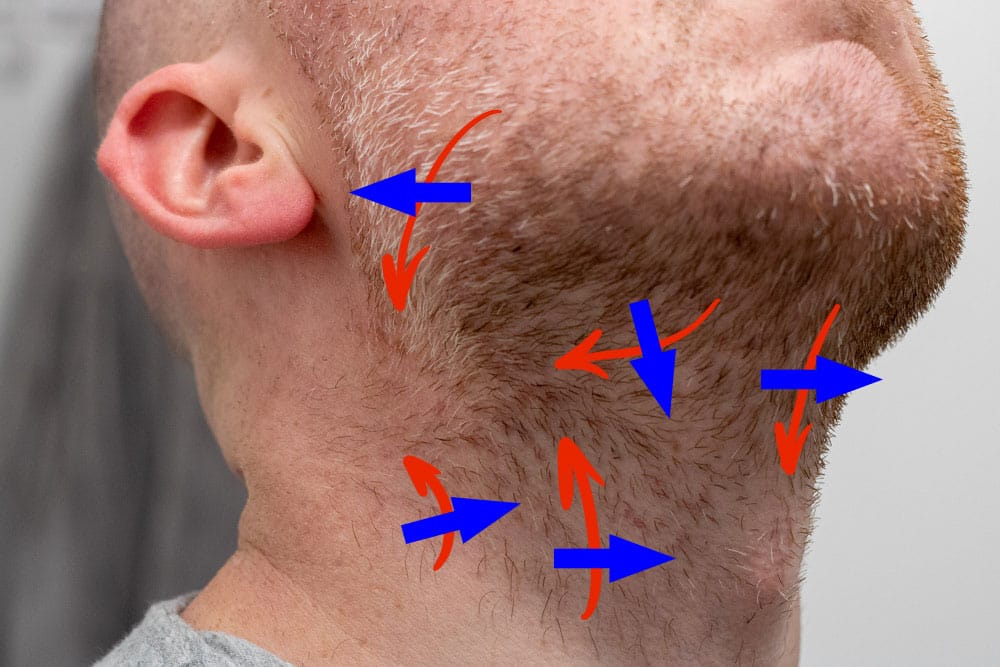
When shaving across the grain, you will pass the razor perpendicular to the natural growth of your facial hair as notated by the blue arrows in the diagram above. This will help to provide closer results.
However, going in this direction is only advised for select razors (more on this in a minute). Additionally, this may or may not cause irritation for some men.
Shaving Against the Grain
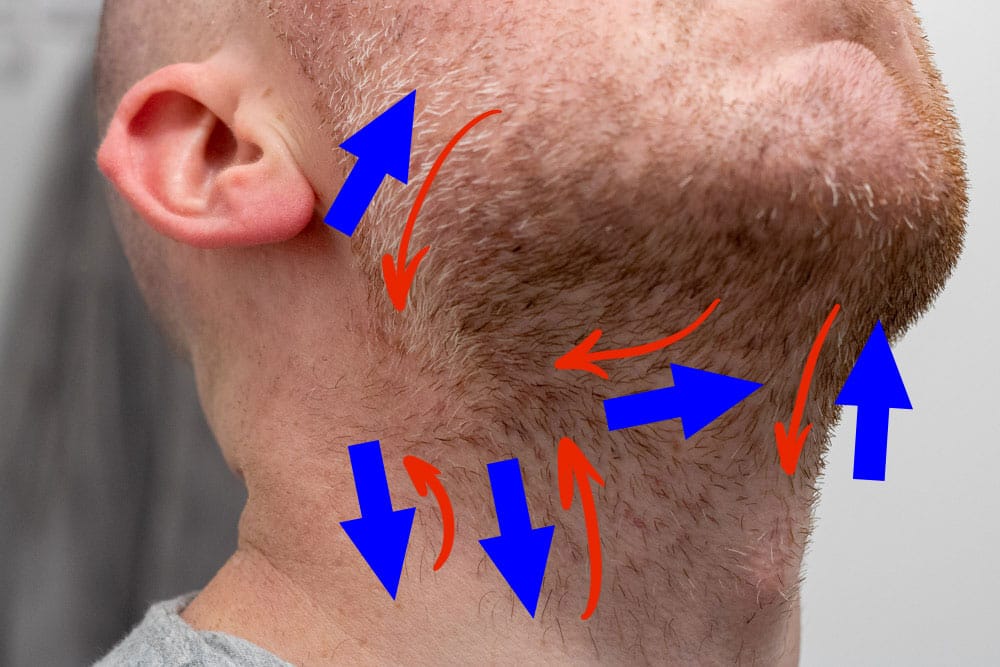
When shaving against the grain, you are passing the razor in the opposite direction of your natural beard growth. Against the grain is the most aggressive shave and will yield the smoothest results. When shaving against the grain, you cut the hair to its lowest possible point. Going against the grain should only be done with select razors.
Razor Systems and Their Limitations
Mapping the grain and determining the direction that you shave are two important parts of the shaving equation. The last, and perhaps most important is understanding the limitation of your preferred shaving tool and what it is capable of.
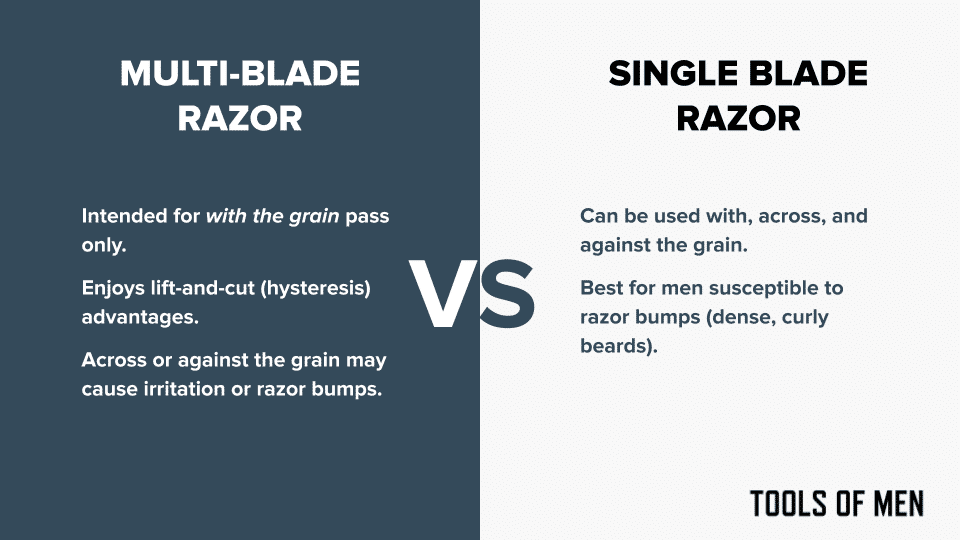
Multi-Blade Razors
Razors containing two to seven blades are designed to achieve smooth results in a single pass. They are able to achieve this due to the lift-and-cut technology (hysteresis) that multiple blades have on your facial hair when shaving. This unique technology makes them only suitable for shaving with the grain.
Should you make an against the grain pass with this razor, you subject yourself to potential irritation, and in some instances, razor bumps (ingrown hairs). To put it simply, going against the grain is not advised here.
Single Blade Razors
Razors with a single cutting edge, such as a straight razor or safety razor, are able to make all three passes in the following order:
- With the grain
- Across the grain
- Against the grain
The reason these razors can perform all three passes is that the blade won’t experience hysteresis like a cartridge razor due to the reliance on just a single cutting blade. Therefore, the hair won’t ever be cut below the surface of the skin. Trying to skip a step and immediately going against the grain isn’t advised as it may cause some mild irritation.
Should you be susceptible to razor bumps, these types of razors are recommended as they won’t cut the hair too low.
Prep is Equally as Important as Mapping the Grain
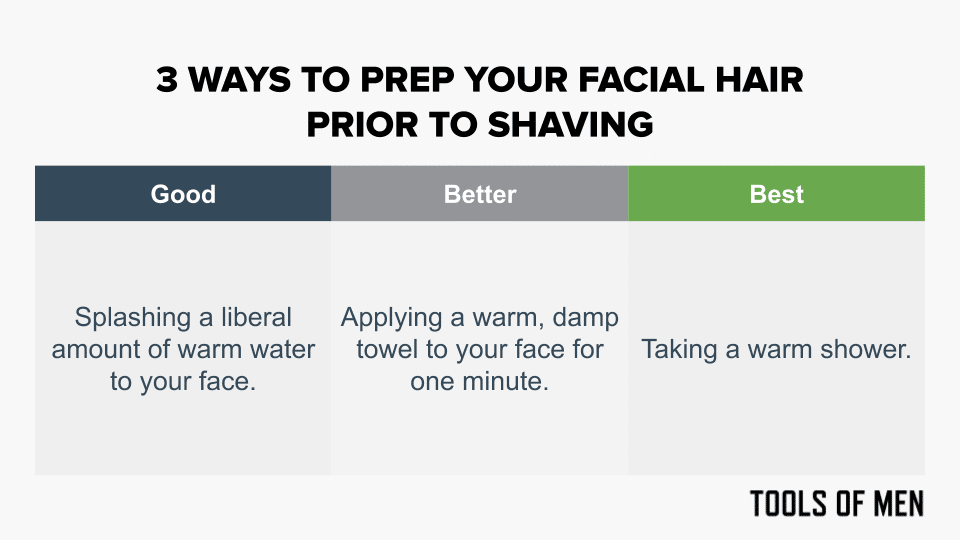
While shaving in the proper direction is important when it comes to both results and comfort, do make sure that you prep your facial hair prior to shaving. By just simply taking a shower, applying a damp and warm towel, or just splashing warm water on your face for a minute or so, it can help to soften your facial hair and make your skin a bit more pliable.
Technique is Better than Ancillary Shaving Supplies
While there are many shaving products that claim that they will measurably increase the comfort and quality of the shave, simply just shaving in the correct direction with the grain will undoubtedly have the biggest impact on comfort.
So, be sure to take the time and study how your facial hair grows; it’s an important part of a good shave.